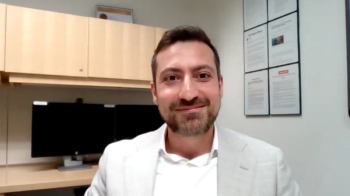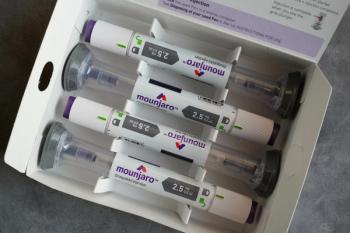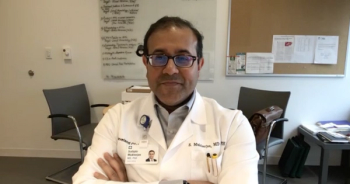
Face paint offers fewer chances at eye injury along with more freedom of movement when dressing up for Halloween.

Face paint offers fewer chances at eye injury along with more freedom of movement when dressing up for Halloween.

Making sure that colored contact lenses are legitimate before Halloween can prevent eye infection.

As the hospital-at-home model grows, a consortium is needed to advance scalability, equity, caregiver well-being, and cost efficiency through research and collaboration.

In a time of skyrocketing oncology drug costs, the role of pharmacists in managing patients’ treatment and keeping care in the outpatient setting is more urgent than ever.

With inflammation being the cause of dry eye in many cases, future treatment will likely target this aspect of dry eye.

Making sure that glands around the eyes are not blocked by poor hygiene is a vital step in mitigating symptoms of dry eye.

Because patients do not always associate their symptoms with dry eye, they often turn to treatments that do not work, says Nicole Bajic, MD.

Risk factors can vary for dry eye, a condition that affects the layers of tear film on the eye, says Nicole Bajic, MD.

In a Cleveland Clinic cohort, patients who stopped treatment for obesity had smaller weight losses to start, making these gains easier to maintain, explained Hamlet Gasoyan, PhD.

Discontinuing the weight loss treatment before hitting the recommended maintenance dose contributes to low-value care despite provider follow-up and efforts to manage side effects, says Hamlet Gasoyan, PhD, Cleveland Clinic.

Real-world cost barriers and insurance denials contribute to early discontinuation of injectable glucagon-like peptide-1 (GLP-1) receptor agonists, reducing their effectiveness for weight loss, explains Hamlet Gasoyan, PhD, Cleveland Clinic.

Patients who remained on treatment, especially at higher doses or on tirzepatide, were more likely to achieve clinically meaningful weight loss and improved glycemic control.

Gastropsychiatrist Eva Szigethy, MD, PhD, and Benjamin Cohen, MD, Cleveland Clinic, discuss quality of life improvement in terms of behavioral health and inflammatory bowel disease (IBD).

The asymptomatic nature of glaucoma makes it imperative to get consistent screening to catch the condition early.

Although most of the innovation in treatment has come in the past decade, new treatments for glaucoma are still being tested, albeit at a slower pace.

Medication, laser, and surgery are all methods of treating glaucoma according to Jonathan Eisengart, MD.

Glaucoma can cause damage to the optic nerve if left untreated, making frequent eye appointments vital for catching it quickly.

Outcomes of interest in this study were time from diagnosis to initial prescription fill for an oral multiple myeloma (MM) medication and time from initial diagnosis to receipt of any treatment for MM.

Yael Mauer, MD, MPH, discusses the patient population who benefits most from interventions with glucagon-like peptide-1 (GLP-1) therapies and explores the underlying mechanisms at work.

Stacey Ehrenberg, MD, discusses the lacking data and potential implications of using glucagon-like peptide-1 (GLP-1) receptor agonists during pregnancy for patients with diabetes and/or obesity.

Diana Isaacs, PharmD, chair of a recent Institute for Value-Based Medicine® event hosted in conjunction with Cleveland Clinic, details the up-and-coming therapies impacting the scope of treatment in diabetes, obesity, and cardiometabolic health, as well as their associated challenges.

Robert Zimmerman, MD, discussed the adverse side effects associated with glucagon-like peptide-1 (GLP1) and multi-agonist therapies, as well as explored the challenges in developing these interventions.

Experts explain how new diabetes technologies like continuous glucose monitors are transforming care beyond intensive insulin therapy, offering personalized insights and improving outcomes for patients of all treatment levels.

Kevin Malloy, PharmD, BCPS, BC-ADM, CDCES, Cleveland Clinic, discusses how GLP-1 receptor agonists have evolved in the treatment landscape of diabetes and obesity at an Institute for Value-Based Medicine® event hosted in conjunction with Cleveland Clinic.

Marisa McGinley, DO, explains how technology can help improve access to multiple sclerosis (MS) care.

Daniel Ontaneda, MD, PhD, Americas Committee for Treatment and Research in Multiple Sclerosis (ACTRIMS) Forum 2024 chair, discussed what attendees can expect at this year's meeting, as well as how the theme of "Breaking Barriers in MS" will be implemented.

Population-level data highlight varied risk profiles among patients with indolent systemic mastocytosis (ISM), highlighting the need for individualized treatment approaches, according to Sudipto Mukherjee, MD, PhD, MPH, a physician in the department of hematology and medical oncology at Cleveland Clinic.

Expert interviews highlight advancements and challenges in diabetes care technology, including automated insulin delivery systems and continuous glucose monitors, as well as improvements in insurance coverage.

Sudipto Mukherjee, MD, PhD, MPH, hematology and medical oncology, Cleveland Clinic, discusses methods for identifying patients with indolent systemic mastocyctosis (ISM) using health claims data.

Experts explain how diabetes is diagnosed during pregnancy, how treatment differs from that of nonpregnant individuals, the importance of diabetes technology education, and how things change postpartum.

259 Prospect Plains Rd, Bldg H
Cranbury, NJ 08512
© 2025 MJH Life Sciences®
All rights reserved.
